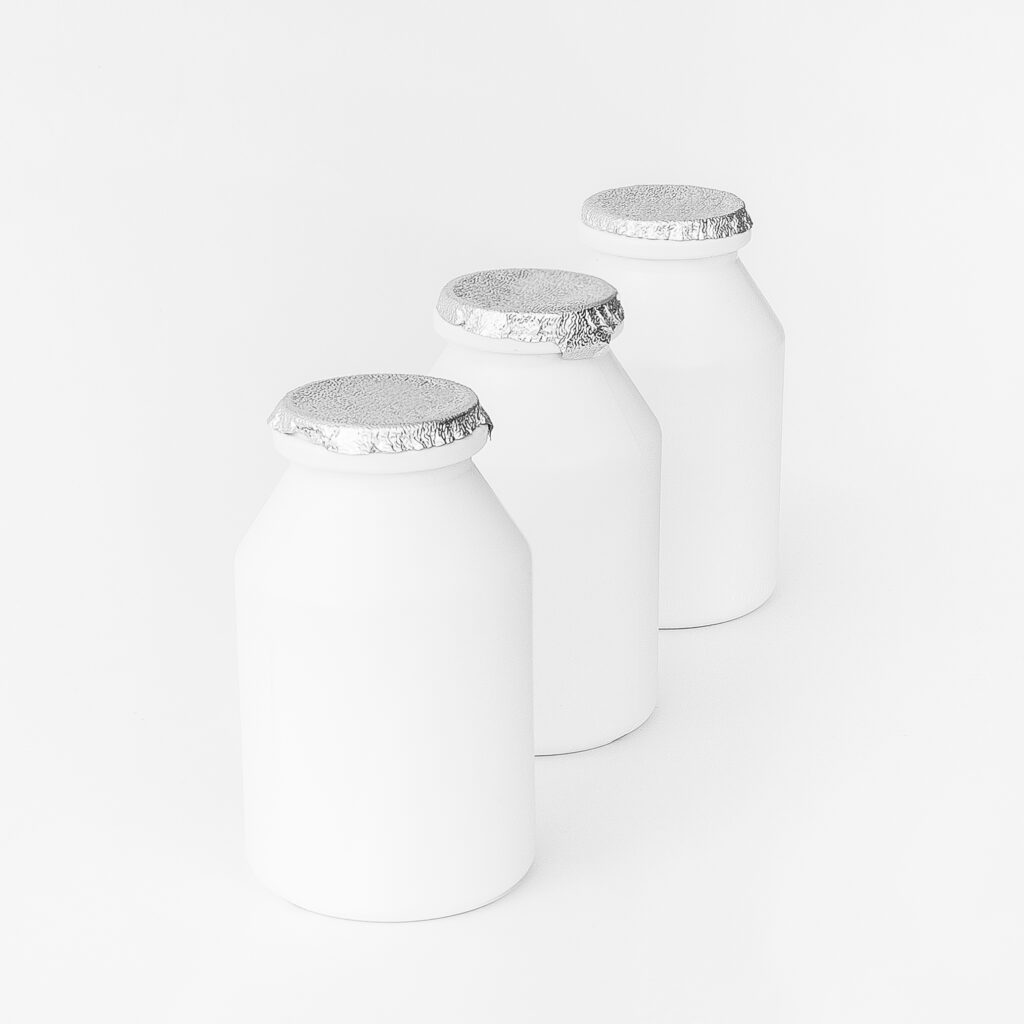Using baby protein shakes can be a convenient way to supplement your infant’s diet with essential nutrients.
Ensuring age dependent nutrition for your baby is necessary for their growth and development, and baby protein shakes have become a famous and highly trusted supplement for parents looking to strengthen their child’s protein intake.
Protein is very necessary for building and repairing injured tissues, boosting immune function, and promoting healthy growth in babies.
However, it is very important to know when and how to add protein shakes into your baby’s regular diet and also to prefer other natural protein sources as well.
In this post, we will explain everything you need to know about baby protein shakes, such as types, natural alternatives, and how to make them at home easily.
Is it Okay to Give a Baby Protein Shake?
Parents may think that is it okay to introduce baby natural or commercial protein shakes into their diet.
The answer totally relies on the child’s taste, specific dietary needs and their overall health.
Mostly, breast milk or formula fulfills sufficient protein requirement during the first year of life.
Introducing additional protein via shakes can be unnecessary unless advised by a doctor to overcome a certain medical condition.
Using protein based formulations for babies who are not getting enough protein from their diet due to health issues, must use protein-rich foods.
However, it is highly important to remember that all babies do not have the same nutritional needs, and at the same time different from adults.
Without doctor’s advice, use of excessive protein intake can strain a baby’s developing kidneys and may lead to long-term health issues.
So, always consult with your pediatrician before introducing any kind of protein rich juice into your child’s diet.
Top 2 Commercial Protein Formulas
If you consider doctor’s advice, you should use natural source of protain. But, in certain medical conditions, when your baby not getting enough protein, you have to buy commercial protein source.
So, here I have mentioned two baby protein shakes, including their shortest description, pros, and cons based on customer reviews.
The images and links used here are temporary. The exact URL and product images will be updated, once i get approval from affiliate program.
1. Orgain Organic Kids Nutritional Protein Shake, Chocolate
Description:
A chocolate-flavored protein shake for kids, containing 8g of dairy protein, 3g of fiber, and 22 vitamins and minerals. It is safe to use as it is gluten-free, non-GMO, and contains no soy ingredients. The shake is made to achieve a healthy snack option for children.

Pros:
- Taste: Most kids enjoy the chocolate flavor, which made it easier for parents to introduce into their diet.
- Nutritional Content: It contains a good balance of protein, fiber, essential vitamins and minerals, which makes it a healthier product to use.
- Convenient: It is ready-to-drink and portable. So, easily to carry.
- Organic Ingredients: Many parents left good remarks due organic and non-GMO ingredients.
Cons:
- Price: Expensive
- Sugar Content: Some parents reported sugar content, though it’s lower than some competitors.
- Consistency: A few parents mentioned that the shake can have a gritty texture.
2. Pediasure Vanilla Delight
Description:
A nutritional supplement with a vanilla flavor, targeted for children between 2 and 10 years old, created to promote growth and development. Arrives in a plastic container, with a mixture of key nutrients included.

Pros:
- Support for growth: Numerous parents observe enhanced growth and weight increase in their children following consistent usage.
- Flavor preference: Vanilla is a popular choice among children, which helps in motivating them to consume it.
- Nutritional Balance: Provides a variety of vitamins and minerals to promote overall well-being.
- Versatility: It is demonstrated by the ability to be mixed with different foods or beverages, allowing for various options in serving.
Cons:
- Artificial Components: The presence of artificial flavors and sweeteners worries some parents.
- Cost: Viewed as high, especially with consistent use.
- Blending Problems: Some users mention difficulty dissolving in liquids, resulting in clumps.
Types of Protein Shakes
There are different types of baby protein shakes available online or in market. But, each one is formulated to meet different dietary needs:
- Milk-Based Protein Shakes: These are actually originated from cow’s milk and comprise whey or casein protein. They are highly digestible and fulfill most amino acid profile.
- Soy-Based Protein Shakes: Made from soy protein and are suitable for infants who are lactose intolerant or allergic to any of the specific dairy products. They also provide a complete protein source.
- Plant-Based Protein Shakes: These are derived from a wide range of plant sources such as peas, rice, and hemp. Such type of shakes are suitable for vegan families and babies with multiple food allergies.
- Hydrolyzed Protein Shakes: These include proteins that are broken down into smaller peptides, to facilitate digestion, especially for babies who have protein digestion issues.
List of Natural Protein Shakes
Natural baby protein shakes can be made easily at home, using whole food ingredients that are a rich source of protein and other essential nutrients. Here are some examples:
- Banana and Yogurt Shake:
- Ingredients: Banana, Greek yogurt, water/milk.
- Benefits: Bananas offer potassium, while Greek yogurt is an excellent source of protein and probiotics, which improve digestive health.
- Avocado and Spinach Shake:
- Ingredients: Avocado, spinach, almond milk, a dash of honey.
- Benefits: Avocados include healthy fats and fiber, and spinach offers iron and vitamin C along with a good quantity of protein.
- Oatmeal and Almond Butter Shake:
- Ingredients: Cooked oats, almond butter, water/milk, a pinch of cinnamon.
- Benefits: Oats are full of fiber and protein, while almond butter includes healthy fats and protein.
- Pea Protein and Berry Shake:
- Ingredients: Pea protein powder, mixed berries, water/milk.
- Benefits: Pea protein is a plant-based protein that is highly digestible, and berries are rich in antioxidants and vitamins.
How to Make Natural Protein Shakes at Home
Making easily protein rich shakes at home is simple and demands that you know exactly what’s in the shake. Here’s how to make them at home:
- Banana and Yogurt Shake:
- Blend 1 ripe banana with ½ cup of Greek yogurt and ¼ cup of water or milk.
- Blend until smooth and serve fresh.
- Avocado and Spinach Shake:
- Blend ½ ripe avocado, check not to be rotten, with a handful of fresh spinach and ½ cup of almond milk.
- Add a dash of honey if you require sweet taste. Blend until it becomes smooth.
- Oatmeal and Almond Butter Shake:
- Cook about ¼ cup of oats and let them cool for some time.
- Then, blend the oats with 1 tablespoon of almond butter, ½ cup of water or milk, according to your taste, and a pinch of cinnamon.
- Pea Protein and Berry Shake:
- Blend 1 scoop of pea protein powder with ½ cup of mixed berries and ½ cup of water or milk.
- Finally, blend until it becomes smooth and creamy in texture.
Natural vs Commercial Protein Shakes: Advantages and Side Effects
| Aspect | Natural Protein Shakes | Commercial Protein Shakes |
|---|---|---|
| Advantages | Made from whole and fresh ingredients | Convenient to make, which saves time |
| Contain no preservatives or artificial ingredients | Supplemented with vitamins and minerals | |
| Can be modified to suit baby’s dietary needs | Easily and widely available | |
| Side Effects | Choking or blockage problems if not blended smoothly | Include artificial additives, sugars, or allergens, which damage health |
| Requires time to prepare | Risk of overconsumption leading to excessive protein intake | |
| Spoilage issue due to shorter shelf life | Expensive | |
| Nutritional Value | Nutrients enriched if made with quality ingredients | Balanced nutrients but may lack the freshness of whole foods |
When to Give a Baby Protein Shake
Mostly parents wonder, when to introduce a baby protein shake into your little one’s diet. Here are some considerations:
- Picky Eating: When you find that your baby begin to refuse solid foods that are rich in protein, such as meats or beans, always go with a protein shake, which can help fill the gap.
- Growth Peak: During a phase of your baby’s rapid growth, a baby protein shake can support your baby’s enhanced nutritional needs.
- Medical Conditions: Babies suffering from metabolic conditions or digestive disorders may require additional protein, as advised by a doctor.
Metabolic Conditions Associated with Lack of Protein in Babies
Protein deficiency in babies usually results in several metabolic conditions, such as:
- Kwashiorkor: An intense form of malnutrition characterized by edema, irritability, an enlarged liver, and a distended abdomen. It happens when you add no protein, in yours baby’s diet.
- Marasmus: This condition occurs due to calorie and protein deficiency, results in significant weight loss, muscle wasting, and retarded growth.
- Protein-Energy Malnutrition (PEM): This condition happens when your’s baby’s diet lacks sufficient protein and energy, leading to abnormal growth and development.
- Failure to Thrive (FTT): Babies who failed to get an adequate protein may do not reach developmental milestones, experience poor weight gain, and have impaired immune system.
Conclusion
Baby protein shakes can only be a fruitful in circumstances, especially when your baby not receiving adequate protein from diet.
However, natural baby protein sources are far the best and should be the first choice, as they provide a balanced mix of nutrients without the risk of overconsumption or artificial additives.
Whether to choose a natural protein shake or a commercial one, depends on your baby’s demand and health condition.
So, it is crucial to consult with a pediatrician to choose natural or commercial one. Because, every baby is different, and their nutritional requirements can vary greatly based on age, health, and growth patterns.


